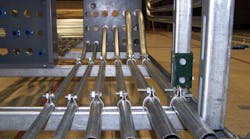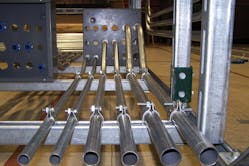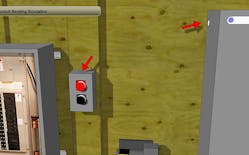The model of apprenticeship training dates back as far as the Middle Ages — where master tradesmen and craftsmen passed on their skills by mentoring learners called apprentices. The apprentice worked directly with the master for feed, lodging, and pay until the skills were attained to the level of journeyman. Today, we refer to this type of arrangement as “on-the-job” training (OJT).
The apprenticeship model has certainly been refined over the past hundreds of years by including other components, such as classroom theory, physical lab activities, and even competency testing. But in the past 50 years, the apprenticeship model hasn’t really progressed much further, even though today it is now used in occupations other than the construction and maintenance industry. Universities accredit the model of apprenticeship as a highly successful constructivism learning model, where learners personally build what they are studying and then construct their own understanding and knowledge of the experience.
An apprenticeship is not true to form if training only occurs in the classroom with no job-site component. Hence, over the past 50 years, much of conduit fabrication and planning skills has occurred on the job site. The master craftsman would set aside time during the work day to explain the skills of conduit fabrication — to the point of having the apprentice fabricate conduit bends for that specific job site. As you can imagine, this training time on the job is not profitable for the electrical contractor, even though it is essential for the training of the future workforce.
But times have changed. Today’s jobs are tight bid situations where the overhead OJT costs of apprenticeship are limited. More and more training has to be accomplished at the training center. Costs are now passed onto the training center as physical training (e.g., equipment costs, material costs, and other instructor hourly costs).
In the case of conduit fabrication skills training, learning has typically occurred in the bending lab area of the training center (Photo). But what emanates with this initial learning approach of conduit fabrication is conduit waste, the instructor’s challenge to manage many learners at one time, and, oftentimes, a limited amount of conduit fabrication tools and materials.
Leveraging online training software is one way a training center can sidestep some of these challenges. Students can study the virtual 3D images of a space that require new conduit and navigate around the room with the mouse of a computer (Fig. 1). The interactive instruction of an online simulator can start with the basic skill of recording the correct measurements for a conduit bend. Then, the apprentice can proceed to the trigonometry step of planning bend fabrications, applying visual math to the example problem. Next, the student can experience the steps of marking the conduit at various locations required to make a series of bends (Fig. 2). Finally, the simulator allows the apprentice to fabricate the bend using the computer mouse to drag the bender handle (Fig. 3).
Does the use of simulation software replace the physical, hands-on bending of conduit in a real training center? Of course not. But if this approach is used as a precursor to the actual conduit bending session in a real lab, the apprentice will have a better understanding of the conduit fabrication process and techniques needed to complete the task. This virtual learning support system reduces the time of explanation in the real lab and the “oops” waste pile of expensive conduit.
Today’s apprentice expects to be trained with simulation software. By combining cost-effective precursor simulations with actual hands-on conduit bending lab exercises, the student is much better prepared to succeed on an actual job site.
Ball is the director, inside curriculum & electronic media for the National Joint Apprenticeship and Training Committee (NJATC) based in Upper Marlboro, Md. He can be reached at [email protected].
SIDEBAR: The New Generation Apprentice
There is a new generation of learner in apprenticeship training today. This generation has never been without computers, online technology, and even devices such as software simulators. They expect the use of computers and Internet technology. If it’s not provided, they’re disappointed. Their generational style of learning demands 3D modeling of real-world applications. These individuals respond best to a blended learning environment, which couples the face-to-face active learning environment in the classroom and labs with the immersive simulations and interactive components of an online training system. The online activities can include applied homework activities that are graded by the online system, simulations that look and react like real equipment, and gaming exercises that allow the learner to travel down multiple paths and outcomes to offer varied outcomes and experiences.







